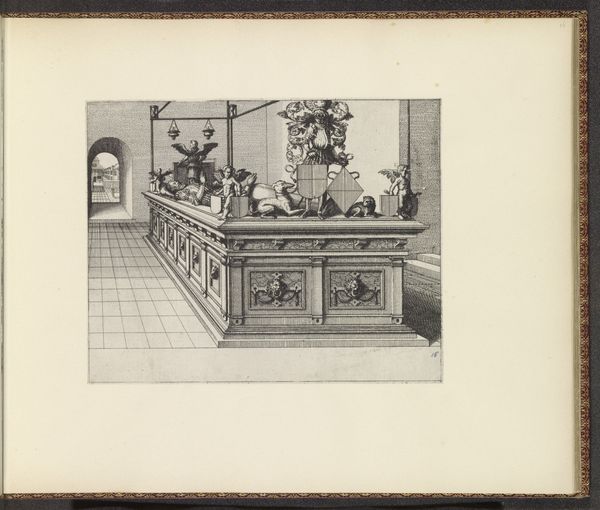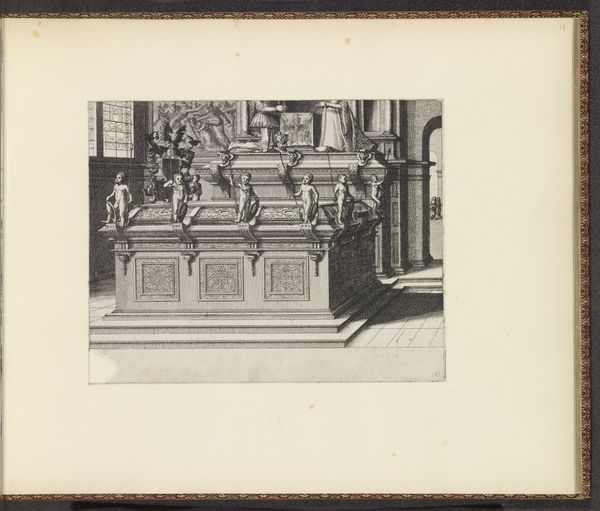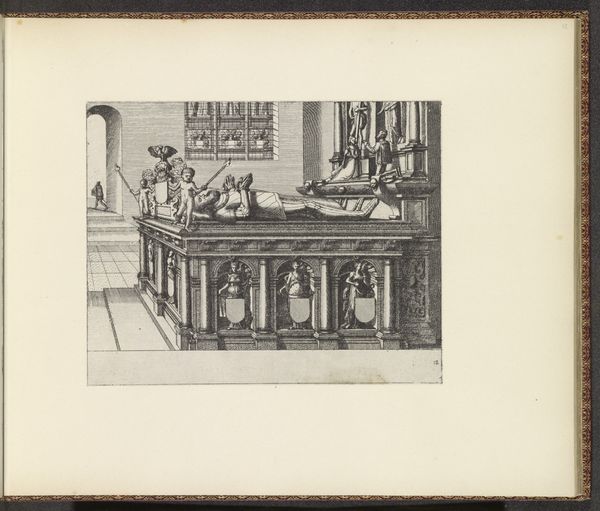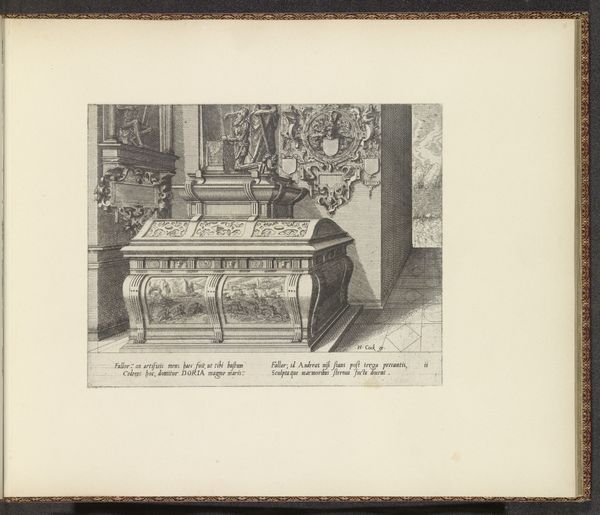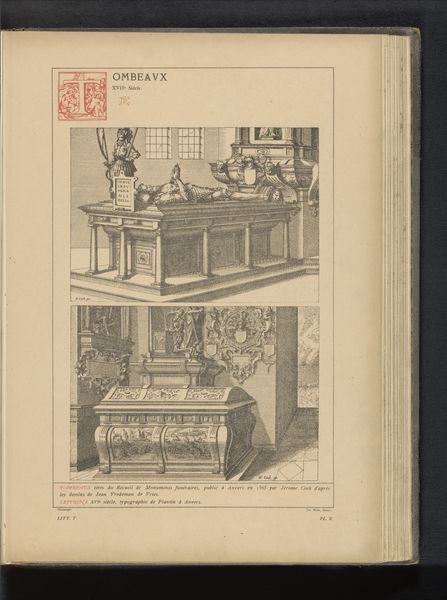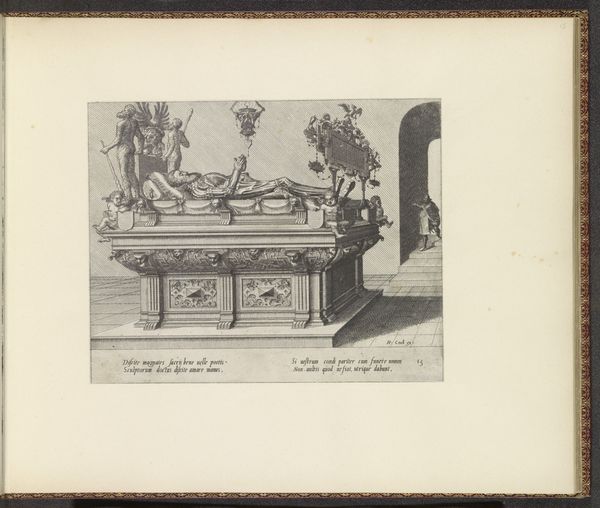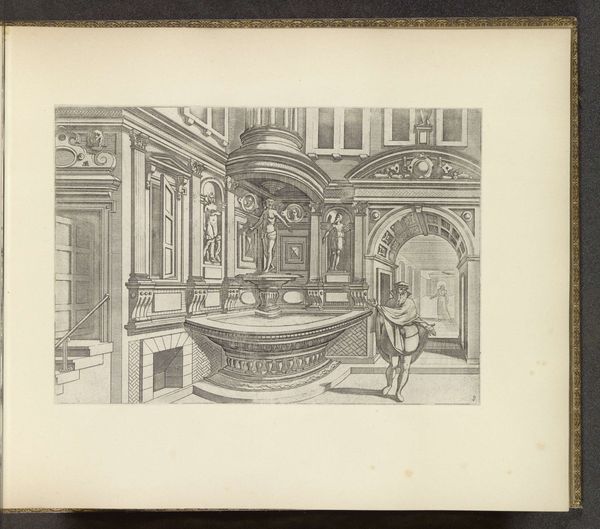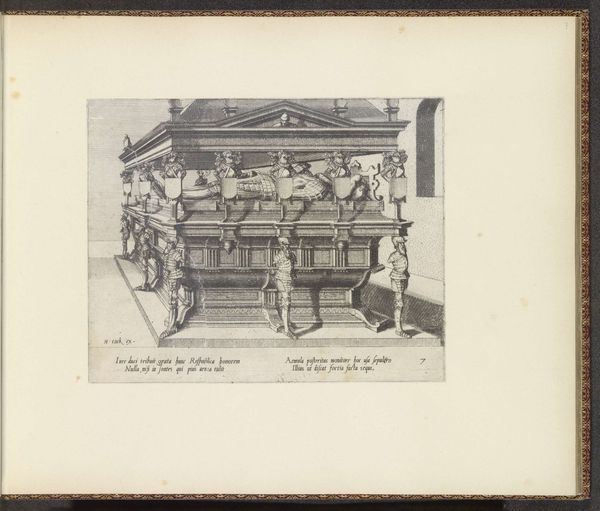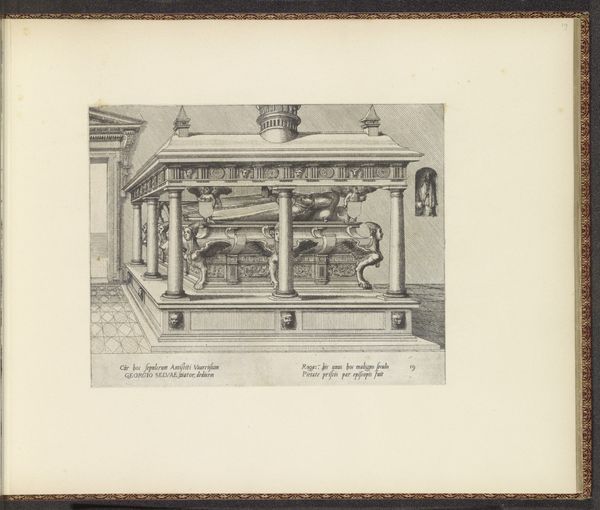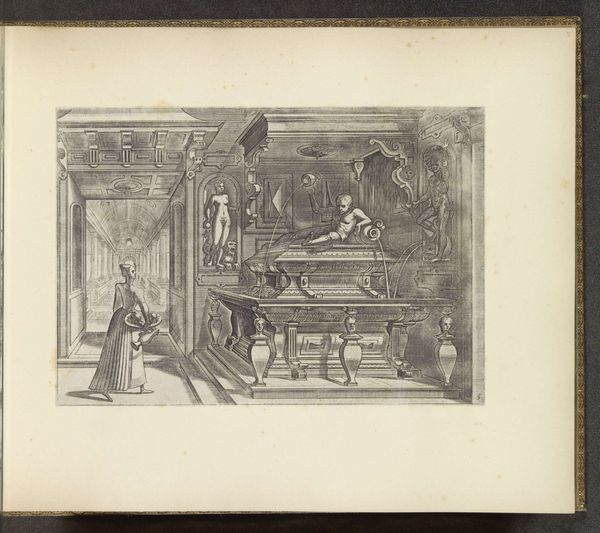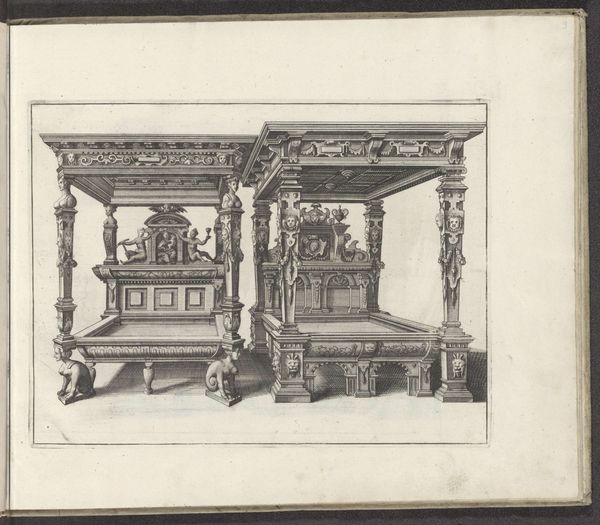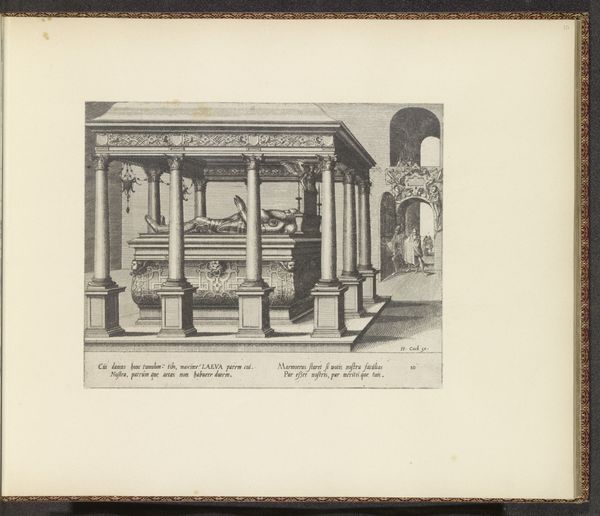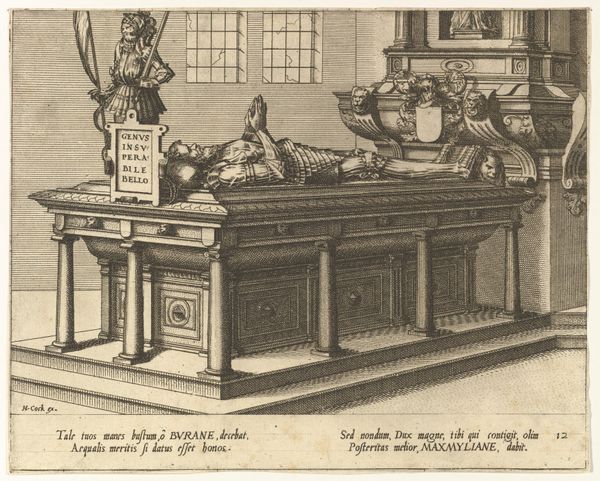
Grafmonument voor een man, met zuilen van de Ionische orde 1563
0:00
0:00
print, marble, engraving
#
ink paper printed
# print
#
figuration
#
11_renaissance
#
coloured pencil
#
line
#
history-painting
#
northern-renaissance
#
marble
#
engraving
Dimensions: height 168 mm, width 210 mm
Copyright: Rijks Museum: Open Domain
Curator: Here we see "Grafmonument voor een man, met zuilen van de Ionische orde," an engraving made in 1563 by Johannes or Lucas van Doetechum, currently held in the Rijksmuseum collection. It showcases a detailed tomb. Editor: It strikes me immediately as intensely somber. The rigid lines and almost clinical detail remove any sense of warmth. The stark contrast emphasises the permanence of death. Curator: Indeed. Monumental tombs became quite prevalent during the Renaissance, reflecting shifts in societal values. They were visual assertions of lineage and social standing. It also signals an emergent visual culture revolving around humanism. Editor: It also subtly communicates a power dynamic. The monument's grandeur inherently suggests access, privilege and influence not enjoyed equally within that 16th-century context. Were these artworks truly "for" the public, or largely about reinforcing existing power structures? Curator: That's an astute point. The proliferation of printed imagery allowed for wider dissemination of such depictions, reinforcing the existing power. In essence, while appearing as acts of memorialization, these artworks equally acted as declarations. The social theatre mattered as much as honoring the dead. Editor: And, looking at the man on the tomb—the figure isn't romanticized or beautified. We see him recumbent and armored as if perpetually ready for battle. Is that intended to highlight a life spent in military service, further legitimizing authority? Curator: Quite likely. Armor becomes less functional and more symbolic. Embellishments signified higher status and it shows through printed distribution. Engravings allowed families, who might not have traveled far to view it directly, to appreciate the grandeur of the tombs. Editor: This detailed approach allows us to see the object's multiple purposes. It is a funerary work memorialising a man through an elaborately decorated object, but it also communicates dynastic succession. The stark lines leave an intense trace of what it must have been to live in that time, but seen from today. Curator: Exactly, and considering the print's current location, within the Rijksmuseum, it is clear how it reflects national heritage. Editor: Which raises all types of questions. Thank you.
Comments
No comments
Be the first to comment and join the conversation on the ultimate creative platform.
